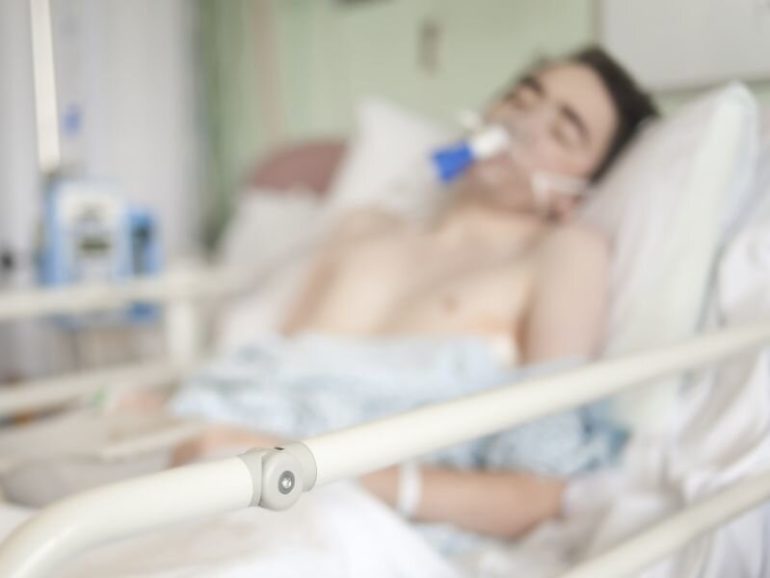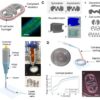Case studies and autopsy results are confirming that, in some cases, COVID-19 can cause such severe lung damage that patients require a lung transplant to survive.
In a new study, researchers in Chicago analyzed discarded tissue from COVID-19 patients who had lung transplants and from patients who died of the disease. They found that COVID-19 can destroy the “fundamental framework” of the lungs, meaning the organs simply cannot recover.
And that means a patient’s treatment choices become very limited.
“We provide explicit evidence that COVID-19 can cause permanent damage to the lung in some patients for whom lung transplantation is the only hope for survival,” said study principal investigator Dr. Ankit Bharat. He’s chief of thoracic surgery and surgical director of the Northwestern Medicine Lung Transplant Program, in Chicago.
His team also discovered unique cells—called KRT17 epithelial cells—in the lung tissue of COVID-19 patients with irreversible damage. These cells have also been found in patients with end-stage pulmonary fibrosis, a deadly progressive lung disease.
The findings, the first of their kind on the issue, were published Nov. 30 in Science Translational Medicine. To date, eight COVID-19 patients have received double-lung transplants at Northwestern Medicine, the most performed at any health system in the world.
Dr. Len Horovitz is a pulmonary specialist at Lenox Hill Hospital in New York City. Reading over the report, he said that its alarming that COVID-19 can damage lungs so badly that lung transplant—a treatment “reserved for very few patients”—becomes necessary.
Lung transplant comes with its own dangers, Horovitz added.
“Complications of transplants include infection (possibly even with COVID-19 again), bacterial infection and possible rejection of the transplanted lungs,” he said.
Speaking in a Northwestern news release, Bharat elaborated on how it’s thought COVID-19 ravages the lungs.
“The progenitor cells in the lungs necessary for healing can repopulate wounds of the lung by moving along the basic underlying framework of the lung matrix,” he explained. “But when the framework is destroyed, the progenitor cells have no place to go and lungs develop large holes that serve to harbor infections, an observation we also made during the tough transplant surgeries in these patients,” Bharat said.
“Think of it this way: after an earthquake, if the basic structure of a building survives, it can still be refurbished. However, if it is leveled, the only option is replacement,” he said.
According to study senior author Dr. Scott Budinger, professor and chief of pulmonary and critical care medicine at Northwestern, lungs attacked by COVID-19 “also showed striking similarities to the lungs of patients with a condition called idiopathic pulmonary fibrosis.”
In that condition, lung tissue gets “thick and stiff, making it difficult for the body to take in oxygen,” Budinger said in the news release.
“As in pulmonary fibrosis, we found that COVID-19 led to the recruitment of circulating immune cells called monocytes, which are likely recruited to the lung to kill the virus,” he added. “In the fibrotic lung, these cells also promote the formation of fibrotic scar tissue. These cells can be easily and safely sampled and might also help mark patients who are failing to recover from COVID-19.”
There was some good news from the report: The researchers also found that it’s safe to perform lung transplants on critically ill patients, even those suffering from infectious causes of lung failure, such as COVID-19. That’s new information in the field of transplantation, the Chicago team said.
And there was another silver lining: Despite the use of immune-suppressing drugs in lung transplant patients, the coronavirus that causes COVID-19 did not seem to return.
The team also found that in COVID-19 patients whose lungs are so damaged that they won’t survive without a lung transplant, it’s safe to place them on ECMO (extracorporeal membrane oxygenation)—a life support machine that does the work of the heart and lungs. ECMO can be used for an extended period of time and still leave the door open for a successful lung transplant, the team said.
The most recent transplant at Northwestern took place on Thanksgiving Day and involved a patient who spent 130 days on ECMO. That’s the longest known amount of time a patient has spent on ECMO in the world before receiving a transplant.
The best news of all from the study: After patients receive new lungs, they tend to recover at a rapid pace, the researchers said.
Coronavirus survivor in US receives double lung transplant
More information:
Ankit Bharat et al. Lung transplantation for patients with severe COVID-19, Science Translational Medicine (2020). DOI: 10.1126/scitranslmed.abe4282
Copyright 2020 HealthDay. All rights reserved.
Citation:
COVID-19 can damage lungs so badly that ‘only hope’ is transplant (2020, December 1)
retrieved 1 December 2020
from https://medicalxpress.com/news/2020-12-covid-lungs-badly-transplant.html
This document is subject to copyright. Apart from any fair dealing for the purpose of private study or research, no
part may be reproduced without the written permission. The content is provided for information purposes only.



